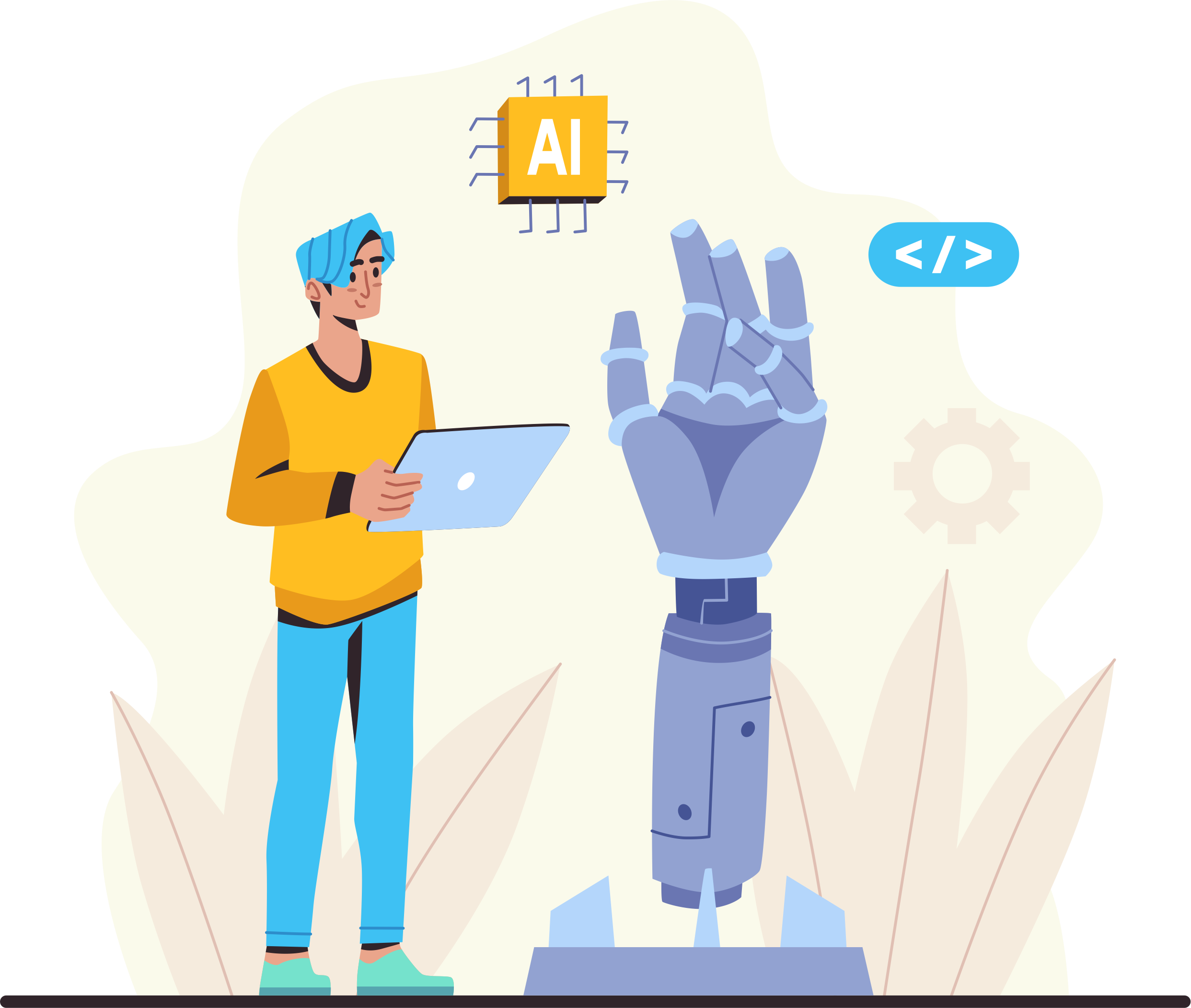What is Intelligent Document Processing (IDP)?
FAQ
What is Intelligent Document Processing?
Intelligent Document Processing (IDP) refers to the use of advanced technologies, such as artificial intelligence (AI) and machine learning (ML), to automatically capture, extract, and process data from various types of documents. IDP goes beyond traditional document processing by incorporating intelligent features that allow for greater accuracy, speed, and efficiency.
In today's fast-paced business environment, the ability to quickly and accurately process large volumes of documents is crucial. IDP helps organizations streamline their document workflows, reduce manual data entry errors, and ensure compliance with regulatory requirements. By automating document processing, businesses can save time, reduce costs, and improve overall productivity.
- Document Capture and Data Extraction Document capture involves the digitization of physical documents through scanning or photographing. Once digitized, IDP systems use data extraction techniques to pull relevant information from the documents. This can include text, numbers, and even handwriting, thanks to sophisticated OCR (Optical Character Recognition) technologies.
- Optical Character Recognition (OCR) OCR is a key technology in IDP that converts different types of documents, such as scanned paper documents, PDF files, or images captured by a digital camera, into editable and searchable data. Advanced OCR solutions can recognize text in multiple languages and formats, ensuring high accuracy and reliability.
- Data Validation and Enrichment After extracting data, IDP systems validate the information to ensure its accuracy and completeness. This process may involve cross-referencing data with existing databases, checking for consistency, and correcting any discrepancies. Data enrichment further enhances the value of the extracted information by adding relevant context or metadata.
- AI and ML Integration: Haystac's IDP uses advanced AI and ML to improve accuracy and efficiency in document processing.
- Multi-language Support: Our solutions can recognize and process text in multiple languages, making them suitable for global applications.
- Real-time Processing: Haystac's IDP solutions provide real-time processing capabilities, ensuring that documents are processed quickly and accurately.
- Scalability: Our solutions are scalable to meet the needs of small businesses to large enterprises, ensuring consistent performance regardless of volume.
- Finance: Automating invoice processing, compliance checks, and financial reporting.
- Healthcare: Managing patient records, insurance claims, and regulatory compliance.
- Legal: Streamlining contract management, e-discovery, and litigation support.
- Government: Digitizing public records, automating citizen services, and ensuring compliance with regulations.
Efficiency and Accuracy Improvements Haystac's IDP solutions automate repetitive tasks, reduce manual data entry errors, and ensure consistent processing standards, leading to significant efficiency gains and improved accuracy.
Cost Savings and ROI By automating document processing, organizations can reduce labor costs and minimize the time spent on administrative tasks. The resulting efficiency gains translate into a higher return on investment (ROI).
Enhanced Compliance and Data Security Haystac's IDP solutions ensure that all processed data is accurate and compliant with industry standards and regulations. Additionally, robust security features protect sensitive information from unauthorized access and breaches.
Getting Started with IDP
Your Guide to Implementing IDP Solutions Effectively
Success starts with the right plan
Steps to Implement IDP Solutions
- Assessment: Evaluate current document processing workflows and identify areas for improvement.
- Solution Selection: Choose the appropriate Haystac IDP solution based on specific business needs.
- Integration: Integrate the chosen solution with existing systems and workflows.
- Training: Provide training to staff on using the new system effectively.
- Monitoring: Continuously monitor and optimize the system for maximum efficiency.
we can't Boil the ocean
Best Practices and Tips for Successful Adoption
- Start Small: Begin with a pilot project to test the solution and gather feedback.
- Engage Stakeholders: Involve key stakeholders in the implementation process to ensure buy-in and support.
- Continuous Improvement: Regularly review and optimize the system to adapt to changing business needs.
Finding the right fit
Is Intelligent Document Processing right for you?
Intelligent Document Processing (IDP) offers significant benefits to organizations handling large volumes of data and documents. By automating manual tasks, IDP reduces repetitive work, enhances accuracy, and boosts productivity. With 80-90% of business data being unstructured, leveraging IDP can unlock untapped potential revenue streams. Across industries, IDP improves efficiency and revenue generation.


it's as easy as 1-2-3
How to choose the right Intelligent Document Processing software?
Choosing the right intelligent document processing (IDP) software is crucial for driving effective digital transformation in business processes.
Here are essential points to consider when choosing your IDP solution:
Assess Your Business Needs: Avoid adopting a one-size-fits-all approach by carefully defining your specific requirements. What are your primary objectives? Whether it’s enhancing customer experience, improving productivity, streamlining processing workflows, or alleviating employee workload, clearly outline your IDP investment goals. Prepare detailed questions for potential vendors regarding expected outcomes, integration ease, user adoption, scalability, training requirements, and compliance with evolving ethical AI regulations.
Identify Data Processing Requirements: Your industry dictates varying data and document types—from insurance claims and legal documents to loan applications and contract management. IDP solutions are adaptable to handle structured data like forms and tables, as well as unstructured data such as email content and graphics. Understanding your data sources and formats is crucial when selecting the appropriate IDP platform.
Select a Customized Solution: Once you’ve defined your needs, focus on finding a solution tailored to meet your specific requirements. Consider features such as multilingual data support, robust privacy compliance tools, authentication capabilities, and seamless integration with existing workflows. IDP platforms can automate document categorization, organizing tasks based on content—for example, sorting applications by date or categorizing emails into relevant folders.
Success starts with the right plan
Knowing What IDP is Not
Understanding Intelligent Document Processing (IDP) and its benefits for businesses also involves distinguishing it from other technologies:
IDP is More Than Just OCR or Data Capture
While IDP incorporates Optical Character Recognition (OCR) and data capture technologies, these are just components of a broader system. IDP integrates advanced AI and machine learning algorithms to add expert-level decision-making capabilities to the processing of content. Unlike simple OCR, which merely converts text from images to editable formats, IDP can understand, classify, and extract data in a context-aware manner, providing deeper insights and higher accuracy.
IDP is Distinct from Robotic Process Automation (RPA)
Robotic Process Automation (RPA) automates specific, rule-based tasks within defined processes. RPA operates on structured data to execute repetitive tasks. However, IDP goes beyond by making sense of unstructured data contained in documents. It captures and interprets content, transforming it into structured data that RPA can then use for downstream processes. Thus, IDP complements RPA by enabling it to handle tasks that require contextual understanding and data extraction from complex documents.
IDP is Not the Same as ChatGPT
ChatGPT is a natural language processing (NLP) model designed to generate human-like text responses based on user queries. It uses deep learning algorithms to understand and produce language. In contrast, IDP, such as Haystac, focuses on extracting and processing data from documents. While ChatGPT deals with conversational AI and text generation, IDP specializes in converting diverse document types—such as invoices, purchase orders, and contracts—into structured, actionable data through OCR and other advanced technologies.

Get started with a free consultation to evaluate how Haystac's IDP solutions can transform your document processing workflows. Contact us today to schedule your free consultation and discover the benefits of intelligent document processing for your business.
Unlocking the future of work.
Lorem ipsum dolor sit amet, consectetur adipiscing elit. Ut elit tellus, luctus nec ullamcorper mattis, pulvinar dapibus leo.
